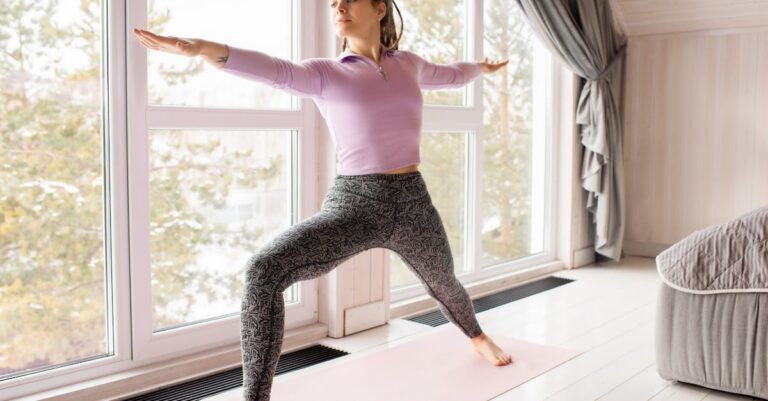Ever feel like your day is a non-stop race? Between work, maybe kids, errands, and trying to have *some* kind of social life, fitting in exercise can feel like mission impossible. You know you should move more, but carving out an hour or two for the gym? Yeah, right. It often feels like you need tons of time and maybe a fancy membership to get fit. Well, guess what? You don’t! This article is gonna show you how home circuit training can be your secret weapon. We’ll break down what it is, why it’s perfect for jam-packed schedules, and exactly how you can start doing it right in your living room, no crazy equipment needed. Get ready to discover a way to get stronger and healthier that actually fits into *your* life.
So, What Exactly IS Circuit Training?
Okay, let’s get down to it. Circuit training sounds kinda technical, but it’s really simple. Imagine setting up a few different exercises – like maybe squats, then some push-ups, then jumping jacks. Instead of doing a bunch of squats, resting, then moving on, you do one set of squats, then immediately move to the push-ups, then right to the jumping jacks, with just tiny rests in between.
Think of it like this: you’re giving different parts of your body a quick job to do, one after the other, before circling back around. It keeps things moving, works different muscles, and gets your heart rate up all at the same time. It’s like creating a mini-obstacle course for yourself, but you can do it pretty much anywhere!
Why Home Circuits Rock When You’re Swamped
This is where it gets really good for busy people. Why choose circuits at home? Oh, let me count the ways!
First off, it’s a massive time-saver. Forget driving to the gym, finding parking, waiting for machines… nope. Your gym is your living room (or bedroom, or garage). You can squeeze in a super effective 20-30 minute workout while dinner’s in the oven or before anyone else wakes up. Seriously, think about someone like fictional Dave – he works long hours and used to think fitness was out of reach. Now, he knocks out a 25-minute circuit three mornings a week before even hopping in the shower. It’s doable!
Second, you don’t need a ton of fancy gear. Your own body weight provides plenty of resistance to start. Push-ups, squats, lunges, planks – they cost nothing! Later, if you want, you can add inexpensive things like resistance bands or a couple of dumbbells, but you can get a fantastic workout without spending a dime.
And third, it’s efficient. Because you’re moving quickly between exercises targeting different body parts, you get a full-body workout and cardio in one session. No need to separate ‘leg day’ from ‘arm day’ from ‘cardio day’ if you don’t have the time. It’s like a fitness multi-tasker!
Building Your First Home Circuit: Keep it Simple!
Ready to try it? Awesome! The key is to start simple. Don’t try to do everything at once. Pick 4 to 6 exercises that work different parts of your body. Here’s a super basic example using just your bodyweight:
- Bodyweight Squats (like sitting back in a chair)
- Push-ups (on your knees or toes – whatever works!)
- Lunges (step forward, bend both knees, push back – alternate legs)
- Plank (hold your body in a straight line, resting on forearms and toes)
- Jumping Jacks (or High Knees if jumping isn’t your jam)
Here’s how you structure it: Decide how long you’ll do each exercise (maybe start with 30 seconds) and how long you’ll rest between them (maybe 15-20 seconds). Do one exercise, rest briefly, move to the next. Once you’ve done all the exercises in your list, that’s one round (or circuit). Rest for a minute or two, then repeat the whole circuit 2-3 times.
Seriously, focus on doing the moves correctly rather than rushing. Quality over quantity, especially when you’re starting out!
Making it Work for *Your* Crazy Schedule
Okay, you’ve got the ‘what’ and the ‘how,’ but what about the ‘when’? This is where home circuits really shine because they’re so flexible. You don’t need a solid hour.
Got 20 minutes before your first video call? Perfect for a quick circuit! Can you sneak away for 15 minutes during your lunch break? Do one round! Prefer to unwind after work? Put on some music and get moving. The best time to work out is honestly whenever you can *actually* do it consistently.
And consistency is key. Don’t feel like you need to crush a super intense workout every single time. Doing a shorter, manageable circuit 3-4 times a week is way better than planning a massive session that you keep putting off because it feels too daunting. Life happens! If you miss a day, don’t sweat it. Just pick it back up the next day or whenever you can. This is *your* fitness journey, make it fit *your* life.
Listening to Your Body (Super Important!)
This one’s crucial, folks. When you’re starting something new, it’s easy to get overly enthusiastic and push too hard, too fast. Remember, exercise should make you feel good in the long run, not broken!
It’s totally normal to feel a bit sore the day after a workout, especially when you’re using muscles in new ways. That’s called DOMS (Delayed Onset Muscle Soreness), and it usually means your muscles are adapting. But sharp pain, or pain that doesn’t go away, is your body saying “Hey! Ease up!”
Listen to those signals. If a certain exercise hurts, stop doing it or find a modification. Can’t manage a full push-up without your wrists screaming? Try doing them on your knees, or against a wall. Jumping jacks feel hard on your knees? March vigorously in place instead. There’s always a way to adjust.
And don’t forget rest days! Your muscles actually get stronger during recovery, not during the workout itself. Skipping rest days can lead to burnout or injury. So build them into your plan.
Leveling Up When You’re Ready
So you’ve been doing your simple circuit for a few weeks, and things are starting to feel… well, maybe a little easy? That’s awesome! It means you’re getting stronger and fitter. Now you can think about gently nudging things up a notch.
How do you know you’re ready? You might finish your circuits feeling less out of breath, or the exercises just don’t feel as challenging anymore. That’s your cue!
Here are a few ways to progress:
- Do more reps or work for longer: Instead of 30 seconds per exercise, try 45 seconds.
- Rest less between exercises: Shorten that 20-second rest to 15 or even 10 seconds.
- Add another round: If you were doing 3 rounds, try for 4.
- Try harder versions: Swap regular squats for jump squats, or try decline push-ups (with your feet elevated).
- Add some resistance: This is where those inexpensive resistance bands or light dumbbells can come in handy to make exercises like squats, lunges, or rows more challenging.
The key is to change just one thing at a time. Don’t try to do everything harder all at once! Slow and steady wins the race.
So, there you have it. Home circuit training isn’t some complicated fitness secret; it’s a straightforward, super effective way to get a great workout without needing tons of time or a gym membership. We’ve seen it’s perfect for busy schedules because it’s quick, you can do it anywhere, and you can start with just your body weight. Remember setting up that simple circuit? You pick a few exercises, do them one after another with short rests, repeat a few times, and boom – workout done!
The most important thing is to just start. Don’t overthink it. Pick a few moves, find 15-20 minutes, and give it a go. Listen to your body, be consistent rather than perfect, and remember that fitting movement into your life, however that looks, is a huge win. You absolutely *can* make fitness a part of your busy life.










